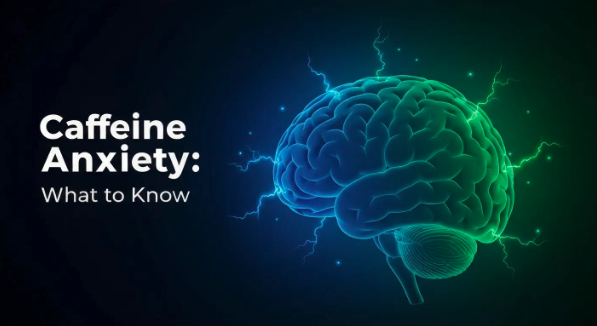The Intricate Relationship Between Trauma and Addiction
Explore the connection between trauma and addiction, revealing how past experiences shape substance use.


Understanding Trauma and Addiction
Understanding the complex relationship between trauma and addiction is essential for recognizing how past experiences can influence substance use behaviors. The consequences of trauma, particularly during childhood, often extend well into adulthood, manifesting as increased susceptibility to addiction.
Impact of Childhood Trauma
Childhood trauma encompasses physical, sexual, and emotional abuse. Research indicates that individuals who have experienced such traumas are three times more likely to report past or current substance abuse compared to those without a history of trauma. This correlation significantly ties to the long-term effects of adverse childhood experiences (ACEs), which can lead to higher vulnerability to addiction, as well as related physical health and socioeconomic challenges.
The following table summarizes key findings regarding childhood trauma and substance use:
Type of TraumaLikelihood of Substance AbusePhysical Abuse3 times more likelySexual Abuse3 times more likelyEmotional AbuseIncreased exposure to substances
Additionally, childhood trauma is linked to increased levels of substance exposure, including alcohol, cocaine, and marijuana, independently of adult trauma exposure. This reinforces the need for early intervention and trauma-informed approaches in treatment settings.
Correlation Between Trauma and Substance Abuse
The connection between trauma and substance misuse is evident, particularly among individuals diagnosed with Post-Traumatic Stress Disorder (PTSD). Patients with PTSD seek treatment for Substance Use Disorders (SUD) at a rate five times higher than the general population. This prevalence underscores the grave impact trauma can have on an individual's capacity to cope, leading them to substance use as a maladaptive coping mechanism.
Understanding this correlation helps mental health professionals and counselors advocate for the incorporation of trauma-informed interventions. These strategies not only address substance use behavior but also the underlying trauma, promoting healthier coping strategies and reducing the risk of further substance dependence. For more information on this topic, consider exploring the role of mindfulness in trauma healing and addressing trauma in relationships.
Recognizing the intricate relationship between unresolved trauma and addiction facilitates the development of effective treatment plans, enabling individuals to journey toward recovery while mitigating the adverse effects of their past experiences.

The Connection with Substance Use Disorders
The relationship between trauma and addiction is complex and multifaceted. Understanding the high rates of substance dependence and how trauma exposure plays a role is essential to grasping the broader issue.
High Rates of Substance Dependence
Research indicates that individuals with a history of trauma experience significantly higher rates of substance dependence. In a sample of 587 urban primary care patients from Atlanta, GA, the following lifetime dependence rates on various substances were noted:
SubstanceDependence Rate (%)Alcohol39Cocaine34.1Heroin/Opiates6.2Marijuana44.8
These statistics underline a strong correlation between childhood trauma—encompassing physical, sexual, and emotional abuse—and subsequent substance use. Studies reveal that individuals who have faced such abuses are three times more likely to report past or current substance abuse compared to those without trauma histories. This highlights the pivotal role that trauma plays in the development of substance use disorders.
Trauma Exposure and Substance Abuse
The effects of trauma extend beyond just immediate emotional distress; they contribute significantly to ongoing substance use issues. Childhood trauma is particularly impactful, with research demonstrating that increased levels of substance exposure, including alcohol, cocaine, and marijuana, are linked to various forms of abuse experienced during formative years. This correlation exists independently of any trauma encountered in adulthood.
Furthermore, a staggering finding suggests that up to 95 percent of individuals with substance use disorder report a history of trauma. The comorbidity of post-traumatic stress disorder (PTSD) and substance use disorders is notable, with studies indicating that approximately 59% of young people with PTSD later develop issues related to substance abuse. Women who engage in drug use also show significantly higher levels of PTSD symptom severity than their non-using counterparts.
Recognizing the connection between trauma and addiction is imperative when creating effective treatment plans. For more information on therapy options specific to trauma and addiction, refer to our article on the role of mindfulness in trauma healing and the various approaches to addressing trauma in relationships. By understanding these dynamics, individuals and health practitioners can work together toward healthier coping mechanisms and healing strategies.

Co-occurrence of PTSD and Substance Use
The relationship between post-traumatic stress disorder (PTSD) and substance use disorders (SUD) is complex and multifaceted. Understanding this connection can shed light on the challenges faced by individuals with a history of trauma.
PTSD and Substance Use Disorders
Research indicates a significant co-occurrence of PTSD and substance use disorders. Patients with PTSD seek treatment for substance use problems at a rate five times higher than the general population [1]. Studies have shown that individuals who have experienced physical or sexual abuse are three times more likely to report past or current substance abuse compared to those without a history of trauma. This correlation can also be seen in adolescents; over 70% of those receiving treatment for substance abuse reported a history of trauma exposure [2].
The interplay between PTSD and substance use disorders often arises from an individual's attempts to self-medicate and alleviate the distressing symptoms of PTSD. The symptoms of PTSD, such as anxiety, depression, and irritability, can lead individuals to look for relief through substance use. Conversely, substance use can create new traumatic experiences, perpetuating a cycle of trauma and addiction.
StatisticValuePercentage of young people with PTSD developing substance abuse problemsUp to 59%Increased likelihood of past substance abuse in those with physical or sexual abuse histories3 times more likelyPercentage of adolescent substance use patients with trauma historyOver 70%
Factors Contributing to Comorbidity
Several factors contribute to the co-occurrence of PTSD and substance use disorders. One significant factor is exposure to Adverse Childhood Experiences (ACEs). Children who experience trauma are at a greater risk of developing addictive behaviors later in life. Studies suggest that these early experiences can have enduring effects on physical health, mental well-being, and susceptibility to addiction.
Socioeconomic challenges also play a role in this relationship. Individuals facing difficult living conditions may turn to substances as a means of coping with stress. The biological and psychological manifestations of addiction combined with social factors create a complex vulnerability for those who have experienced trauma.
In summary, the connection between trauma and addiction is evident in the high rates of comorbidity between PTSD and substance use disorders. Addressing these intertwined issues requires a comprehensive approach that considers the multifactorial nature of trauma and addiction. Resources focused on trauma-informed care can be beneficial for those seeking to understand and heal from both conditions. For additional information, consider exploring the role of mindfulness in trauma healing and addressing trauma in relationships.

Treatment Approaches
Addressing the connection between trauma and addiction requires effective treatment strategies. Two widely recognized approaches are Trauma-Informed Care principles and the Seeking Safety model.
Trauma-Informed Care Principles
Trauma-Informed Care (TIC) is an approach that seeks to recognize and address the effects of trauma on individuals. This model emphasizes minimizing the risk of re-traumatization while promoting an understanding of symptoms from a strengths-based perspective. Providers are encouraged to be familiar with TIC practices due to the high prevalence of co-occurring trauma and substance use disorders. By fostering a supportive environment and utilizing strength-based approaches, TIC aims to enhance the overall treatment experience for patients seeking recovery [1].
Key principles of Trauma-Informed Care include:
TIC PrincipleDescriptionSafetyEnsuring physical and emotional safety for patients.TrustworthinessBuilding trust through transparent practices and setting clear boundaries.Peer SupportIncorporating peer support to enhance connectivity and mutual understanding.EmpowermentProviding choices that empower patients in their treatment journey.
By implementing these principles, treatment providers can create an environment that addresses the complex needs of individuals who have experienced trauma.
Seeking Safety Model in Treatment
The Seeking Safety model is specifically designed for individuals who experience both trauma and substance use issues. This group treatment approach focuses on fostering resilience and teaching coping skills rather than directly processing trauma narratives. By inherently aligning with Trauma-Informed Care principles, Seeking Safety provides a structured framework for addressing the symptoms of trauma within substance use treatment settings [1].
The key components of the Seeking Safety model include:
ComponentDescriptionSafetyEstablishing safety as a priority in all sessions.Coping SkillsTeaching practical skills for managing symptoms and emotions.PsychoeducationProviding education about trauma and its effects, addressing the relationship between trauma and addiction.ResilienceFostering a sense of resilience among participants through shared experiences.
This model not only supports individuals in their recovery from addiction, but also addresses the underlying trauma that contributes to their struggles. By reinforcing these strategies in treatment, individuals can learn to navigate their trauma-related symptoms while pursuing healthier coping mechanisms.
For further insights on related topics, explore our articles on the role of mindfulness in trauma healing and the impact of trauma on sleep.

Vulnerability and Self-Medication
Understanding the connection between trauma and addiction involves examining how childhood trauma can lead to chronic stress and, ultimately, self-medication through substance use.
Childhood Trauma and Chronic Stress
Childhood trauma significantly impacts emotional and psychological development. Those exposed to Adverse Childhood Experiences (ACEs) often find themselves using substances as a means of coping with emotional pain. The chronic stress from these experiences can create vulnerabilities, making individuals more susceptible to developing substance use disorders [3]. Studies suggest that up to 95 percent of substance use disorder patients report a history of trauma, underscoring the critical comorbidity between post-traumatic stress disorder (PTSD) and substance use disorders prevalent in adults and adolescents [1].
ACEs LevelIncreased Risk of Substance Use Disorders (%)1252473 or more60
Dysregulation of Stress Systems
Trauma can lead to the dysregulation of stress systems, causing chronic hyperarousal and anxiety. For individuals with such dysregulated stress systems, drugs of abuse often provide a temporary reprieve. These substances can offer means to regulate mood, quiet intrusive thoughts, and suppress anxiety caused by stress hormones [4].
Furthermore, research indicates a strong relationship between cocaine dependence and PTSD symptoms, highlighting how a history of trauma can lead to increased substance dependence. The cocaine-dependent group typically exhibits significantly higher PTSD scores than their non-dependent counterparts, emphasizing the intricate link between trauma history and addiction susceptibility [2].
By recognizing these patterns, it becomes clear that addressing trauma is essential in preventing and treating substance use disorders. Understanding the underlying vulnerabilities can help in developing more effective interventions and support systems for those struggling with the connection between trauma and addiction. For more insights into recovery, consider exploring the role of mindfulness in trauma healing or the impact of trauma on sleep through our article on the impact of trauma on sleep.

Mitigating Adverse Effects
Understanding the impact of trauma on individuals can help mitigate its adverse effects, particularly concerning mental and physical health. By identifying protective factors and implementing effective prevention strategies, it may be possible to reduce the risks associated with the connection between trauma and addiction.
Impact on Mental and Physical Health
Trauma can have profound effects on both mental and physical health. Individuals exposed to traumatic events may develop conditions like post-traumatic stress disorder (PTSD), which can lead to substance use as a means of self-medication. Individuals often seek relief from the emotional pain and anxiety associated with PTSD through substances, creating a cycle that can contribute to addiction.
Moreover, trauma exposure is linked to various physical health issues. Chronic stress can dysregulate the body’s stress systems, potentially leading to conditions such as hypertension and heart disease. Understanding the relationship between trauma and its physical impacts is crucial.
Health ImpactDescriptionMental Health IssuesIncreased risk of PTSD, anxiety disorders, depressionPhysical Health IssuesGreater likelihood of chronic conditions such as diabetes, heart diseaseSubstance UseIncreased risk of using drugs or alcohol as coping mechanisms
Protective Factors and Prevention
Protective factors play an essential role in reducing the likelihood of developing addiction following trauma. Individual traits, such as optimism, and environmental influences, such as healthy family and peer relationships, contribute to resilience. Targeted prevention interventions can also help by teaching coping skills and encouraging healthy relationships.
Implementing prevention strategies in communities can further support individuals at risk for substance use disorders. These strategies might include education about the effects of trauma, access to mental health resources, and building supportive networks.
The table below highlights common protective factors:
Protective FactorDescriptionIndividual TraitsCharacteristics like optimism, resilience, and strong self-esteemHealthy RelationshipsSupport from family, friends, and community tiesEarly InterventionAccess to mental health services and prevention programs
Fostering an environment that emphasizes these protective factors can aid in addressing the long-term effects of trauma. This can inspire healing and maintain a healthier lifestyle, which is key for those at risk of addiction. Exploring methods such as the role of mindfulness in trauma healing and the importance of addressing trauma in relationships can provide further insight into how to effectively support individuals affected by trauma.
References
[2]:
[3]:
[4]:
More Resources
A team ready to start your journey.
Get in touch — today.
We are a safe space – a haven for exceptional individuals to receive discreet, personalized, in-person treatment and care.
.avif)



.webp)






